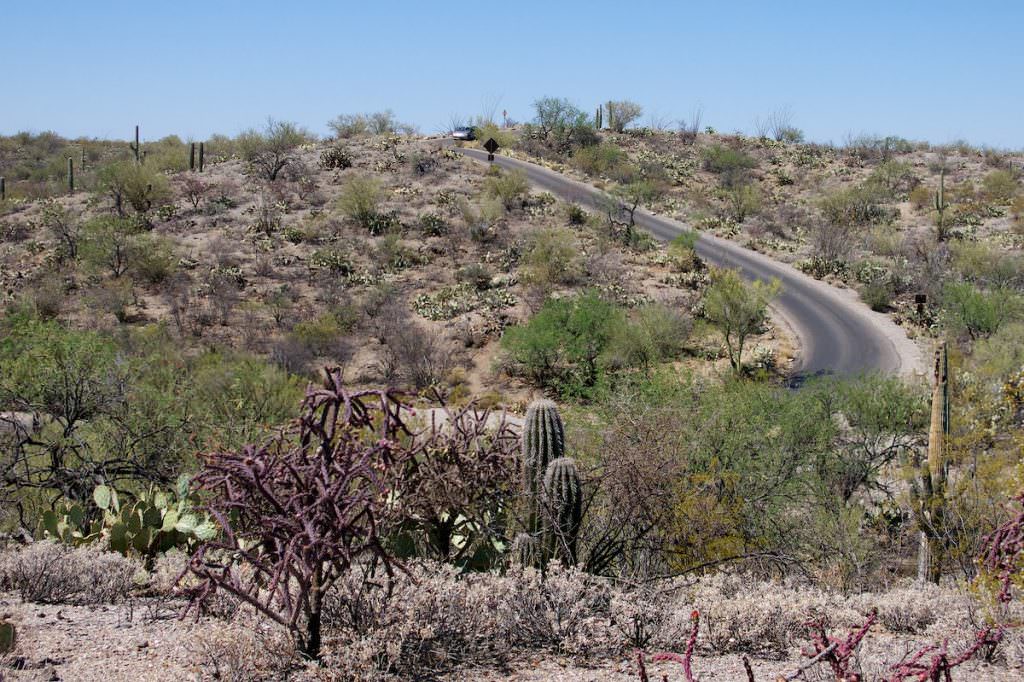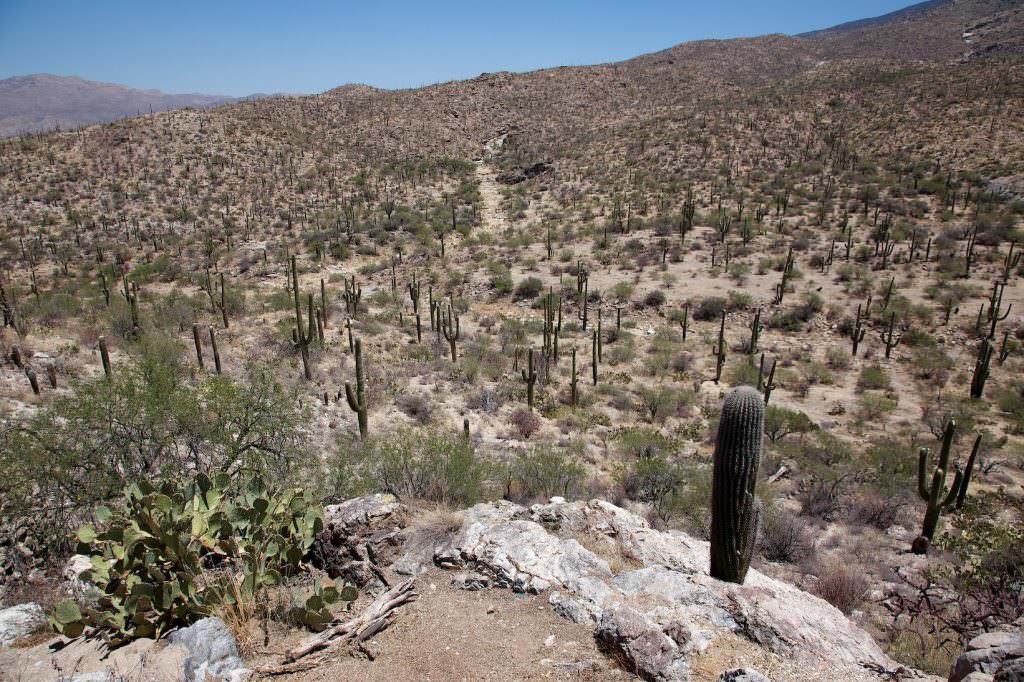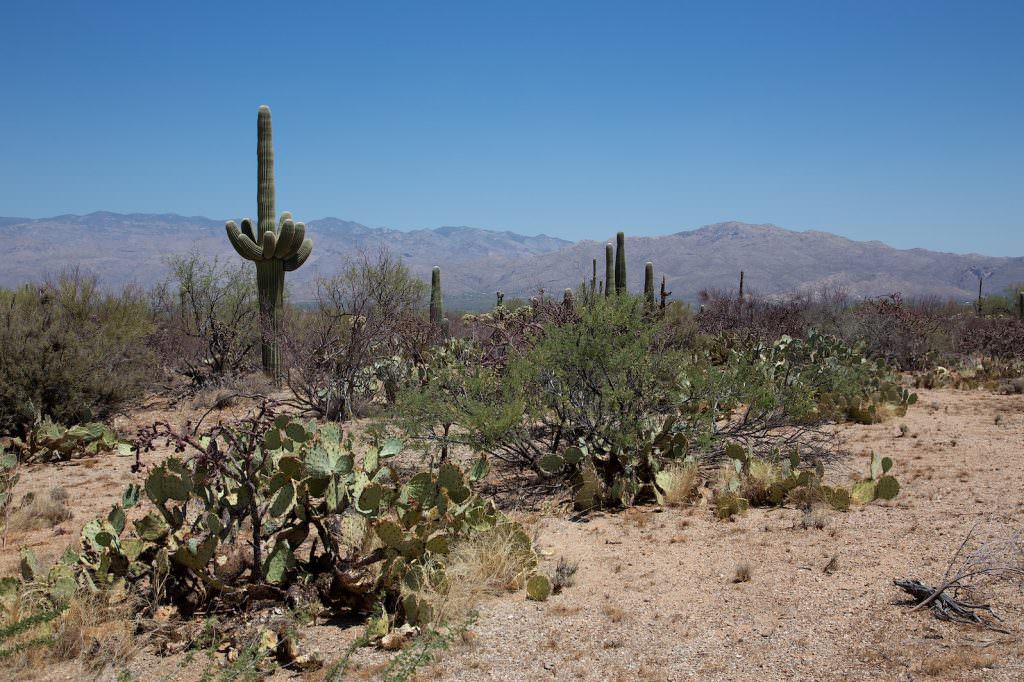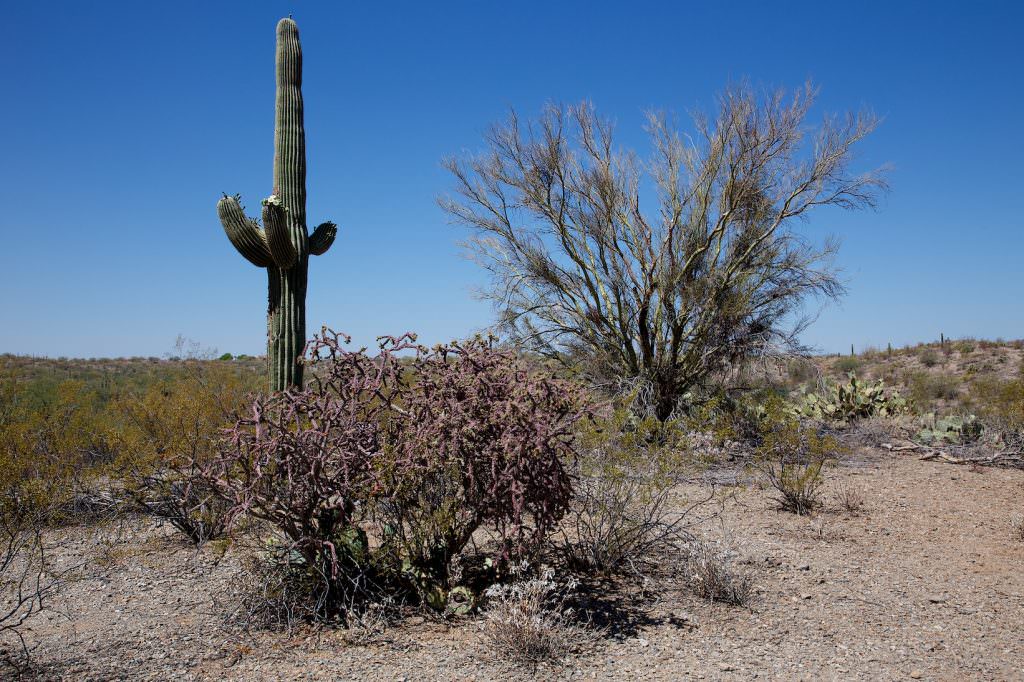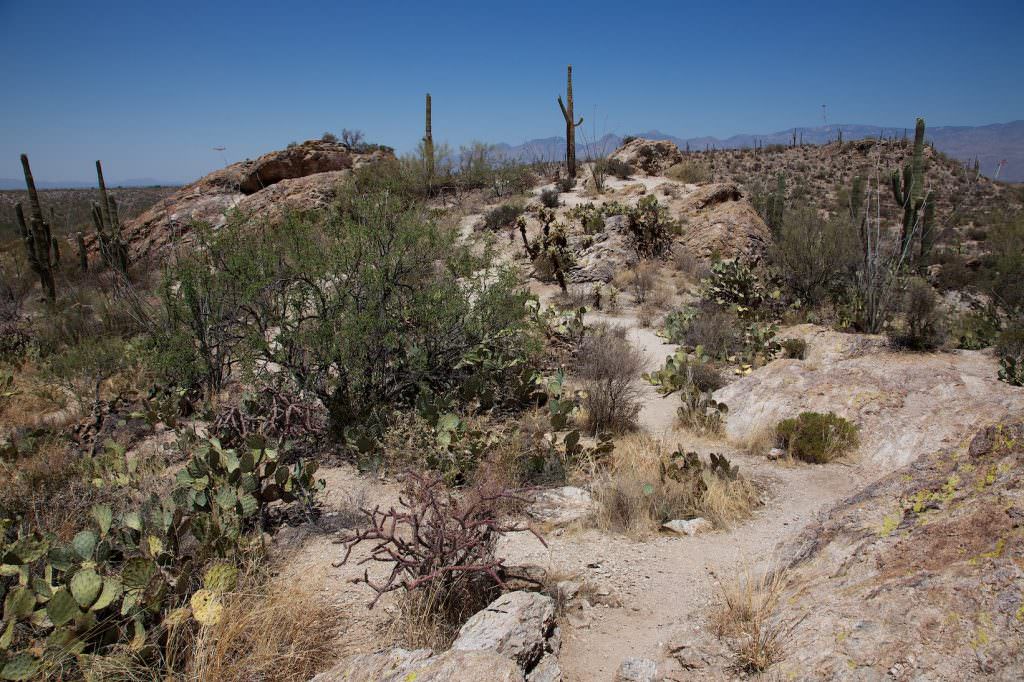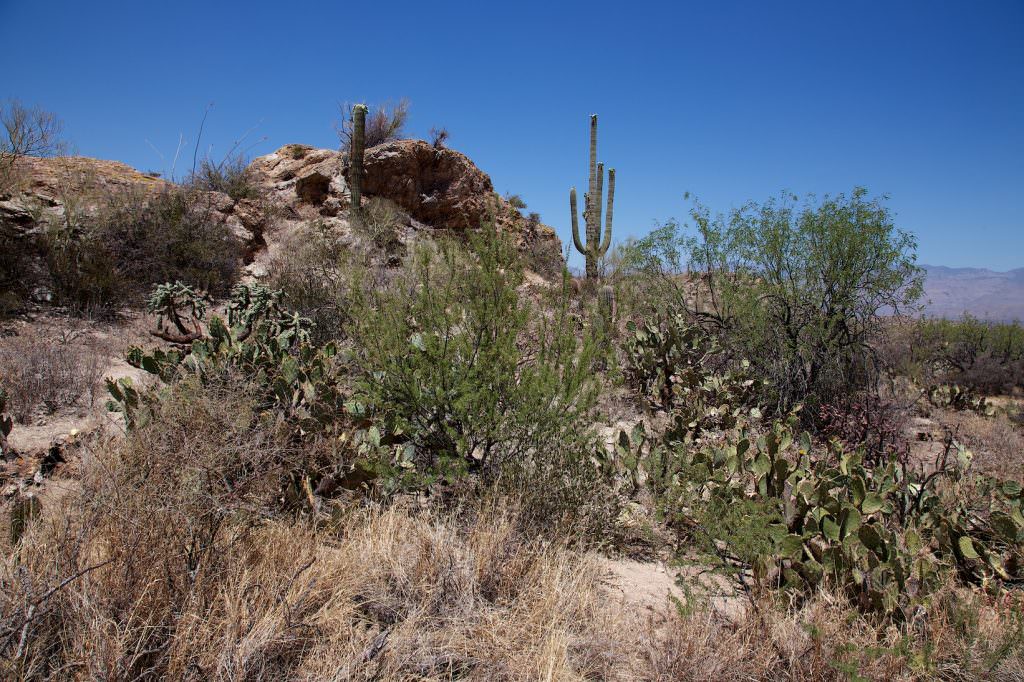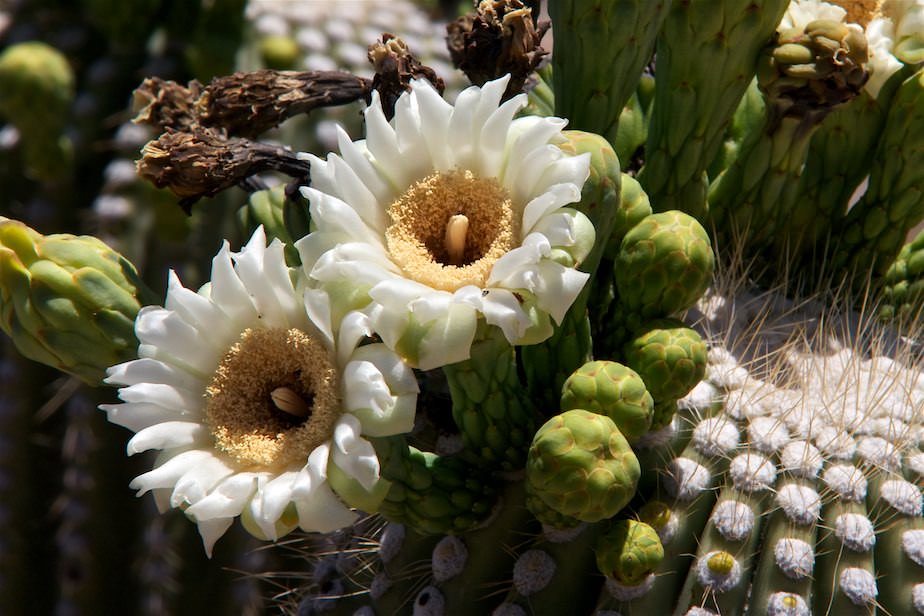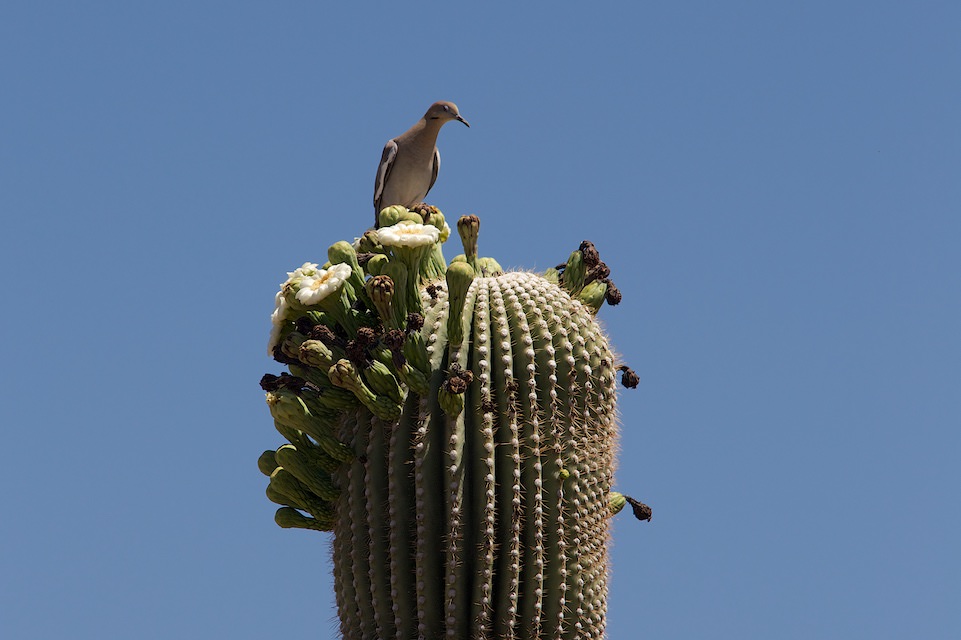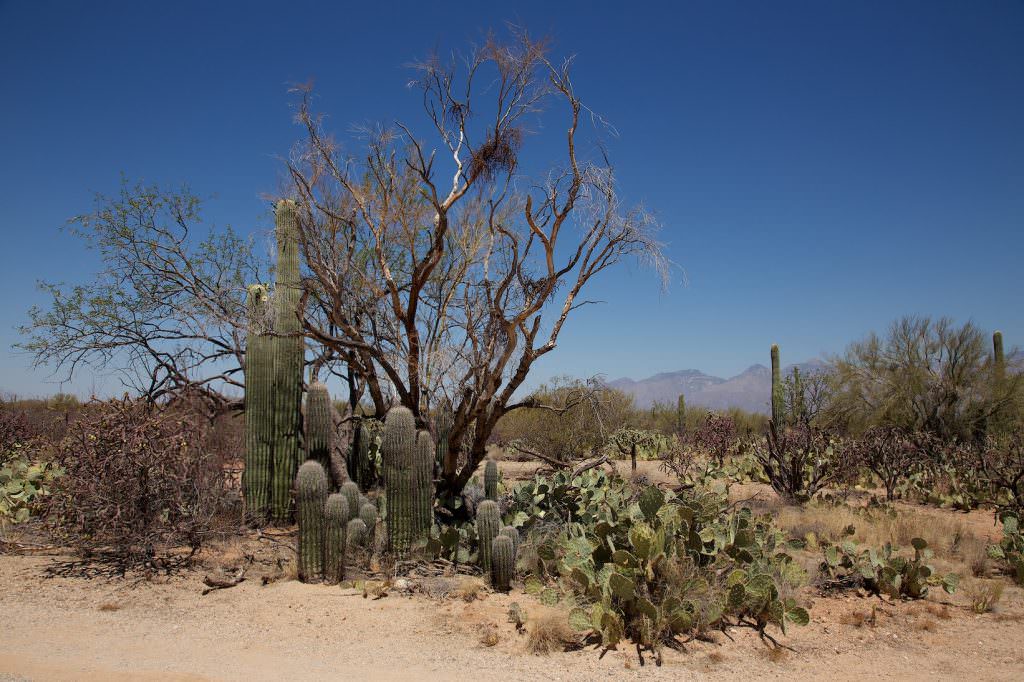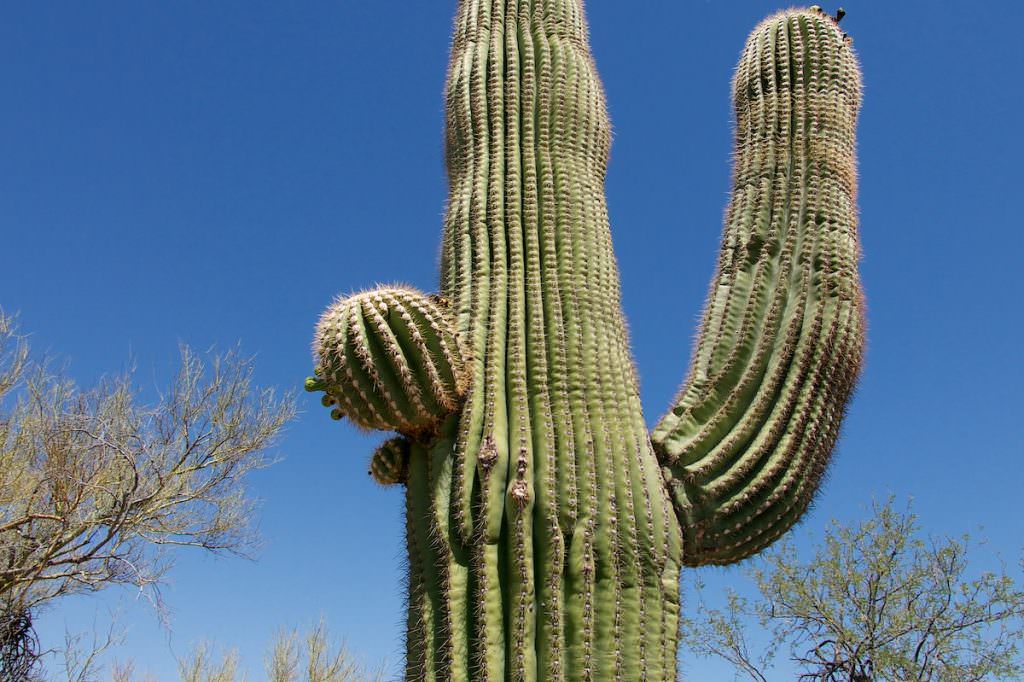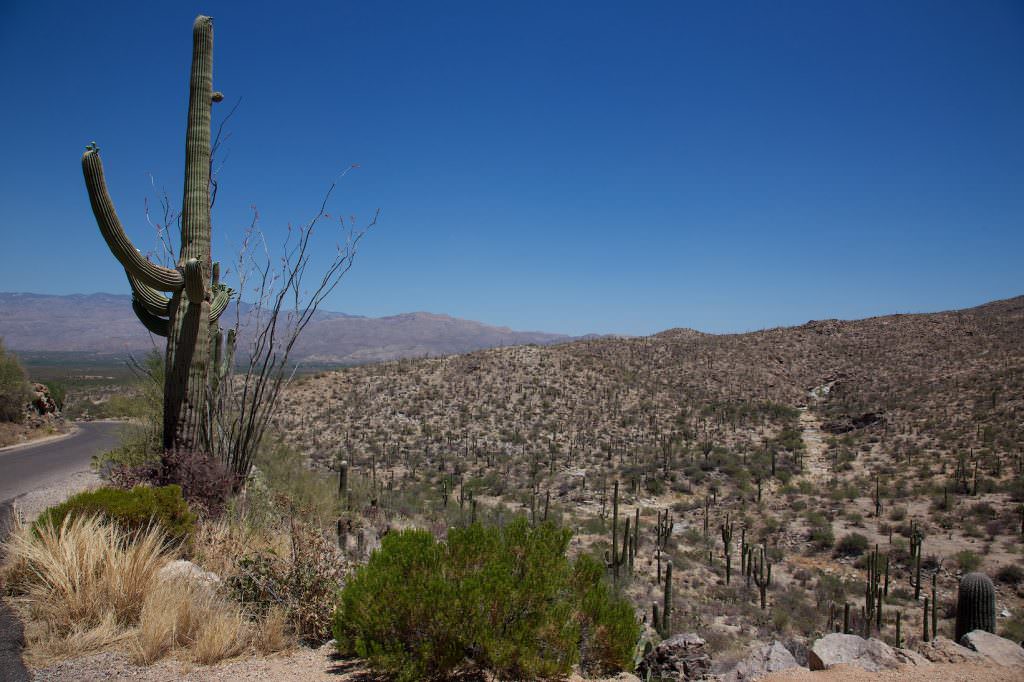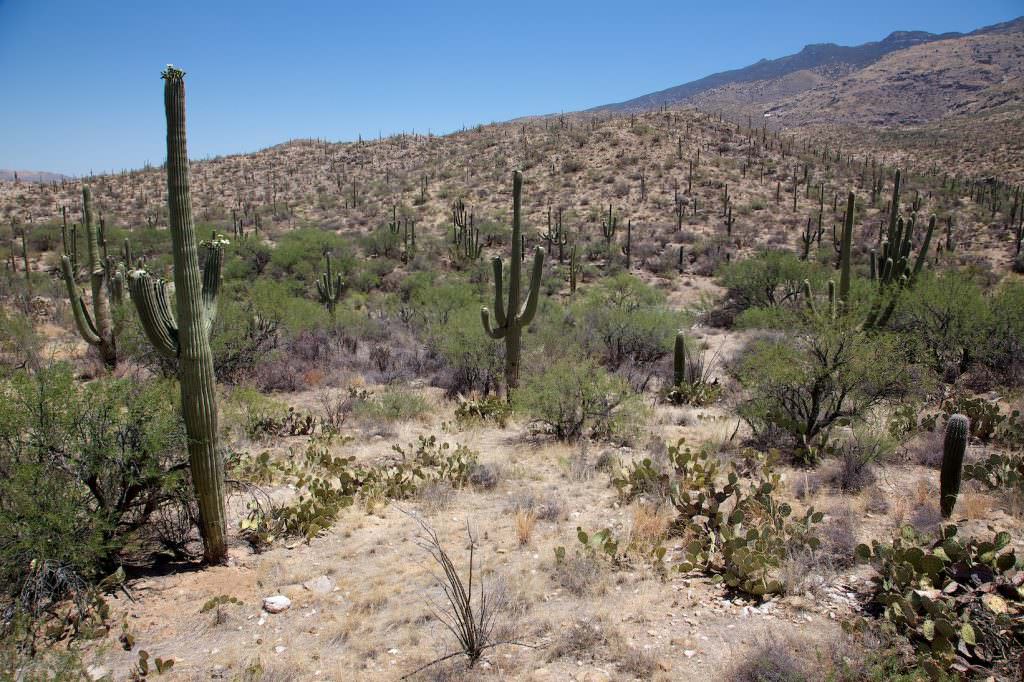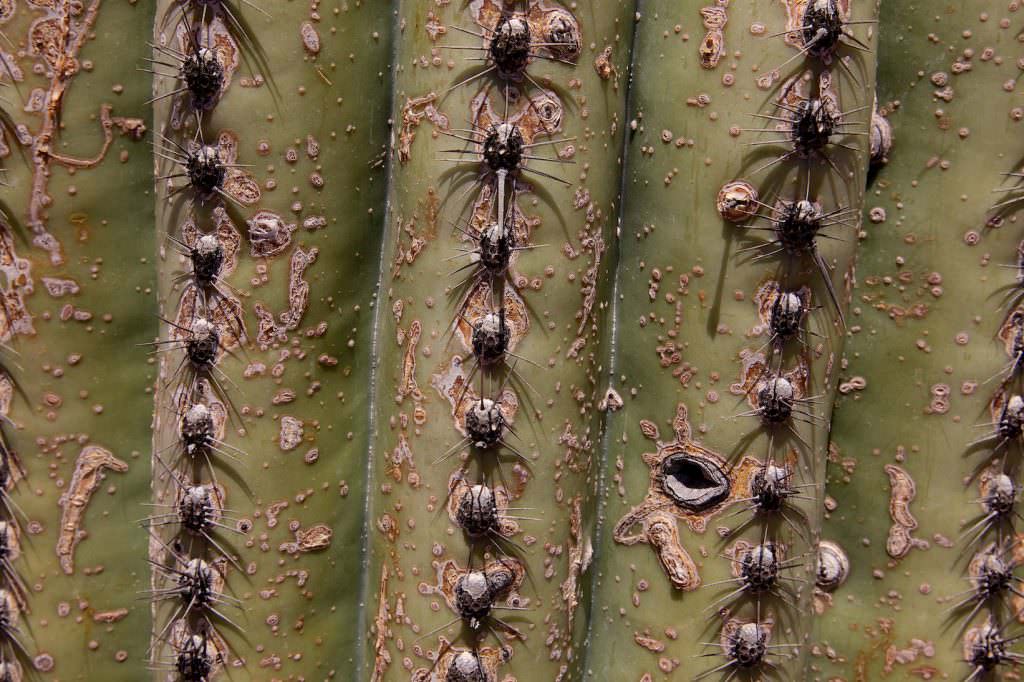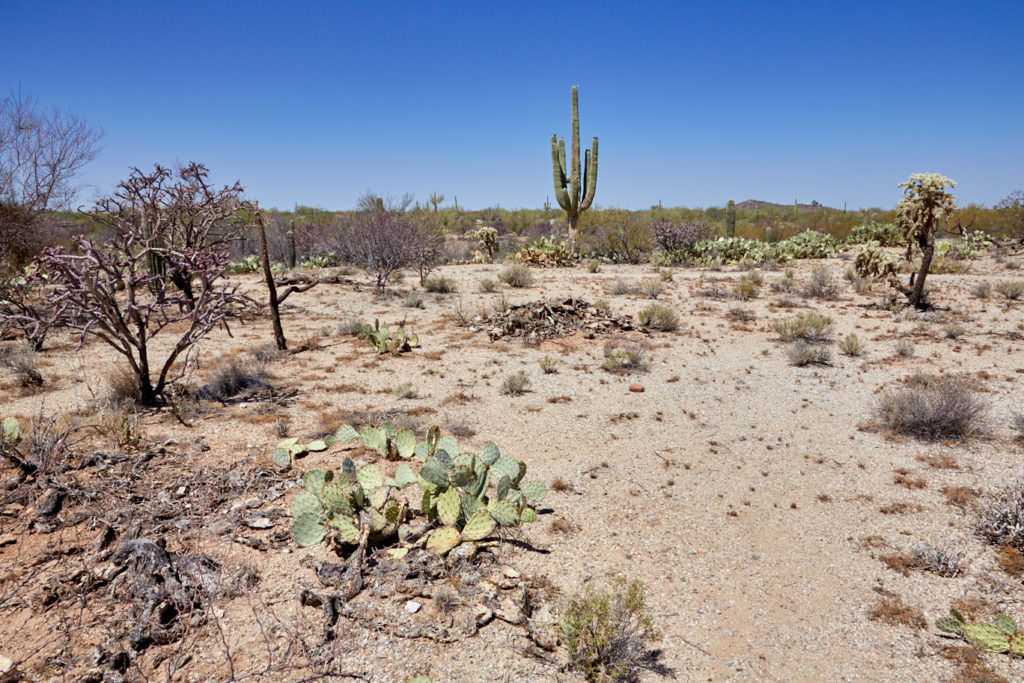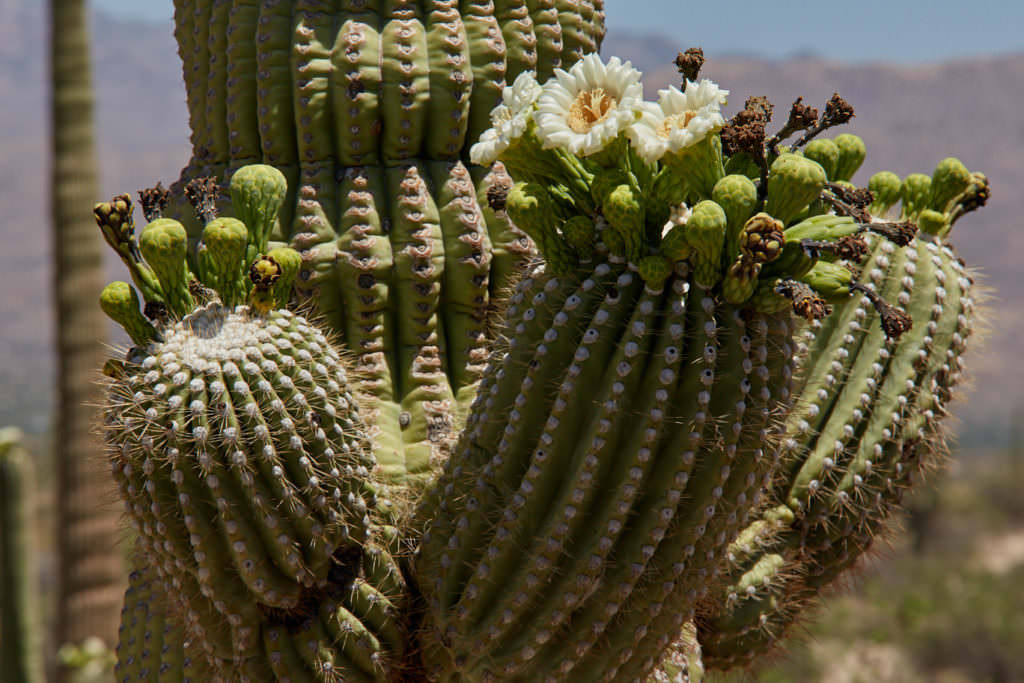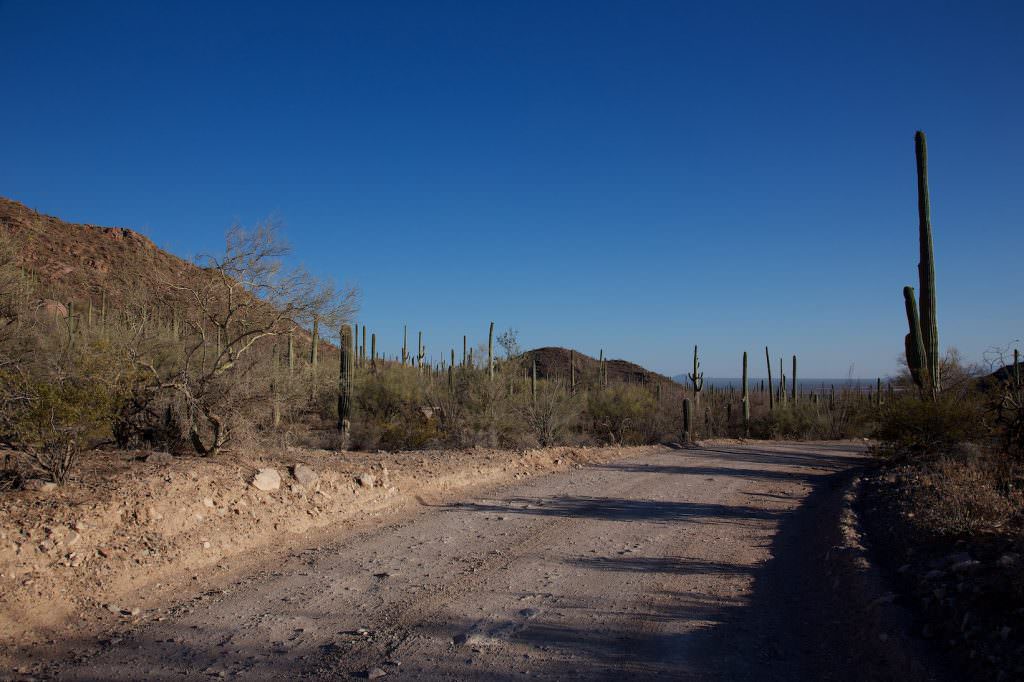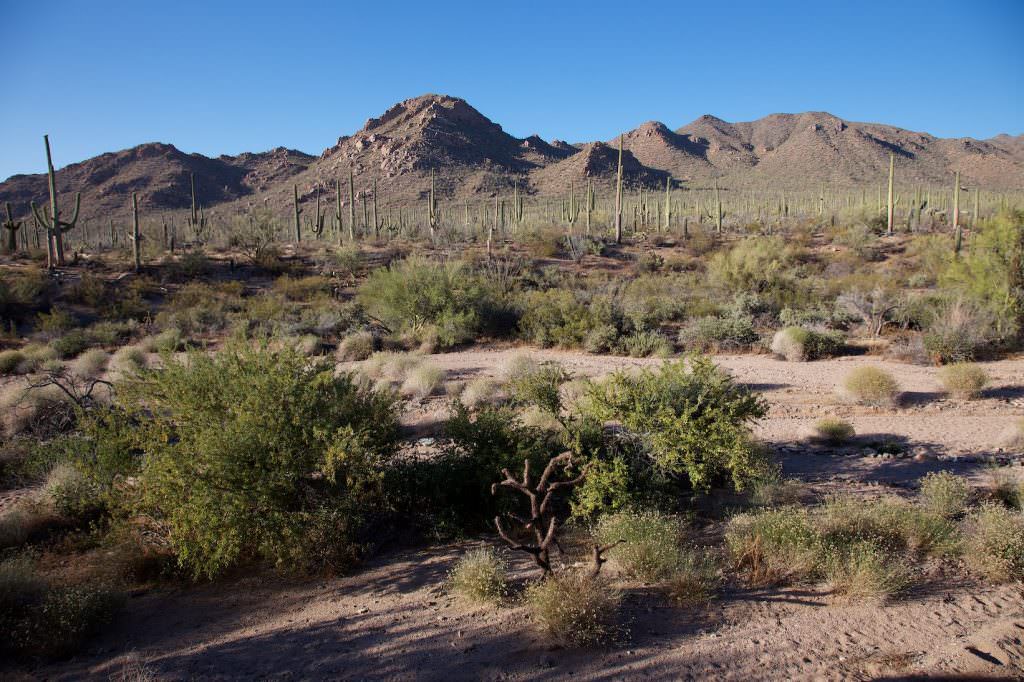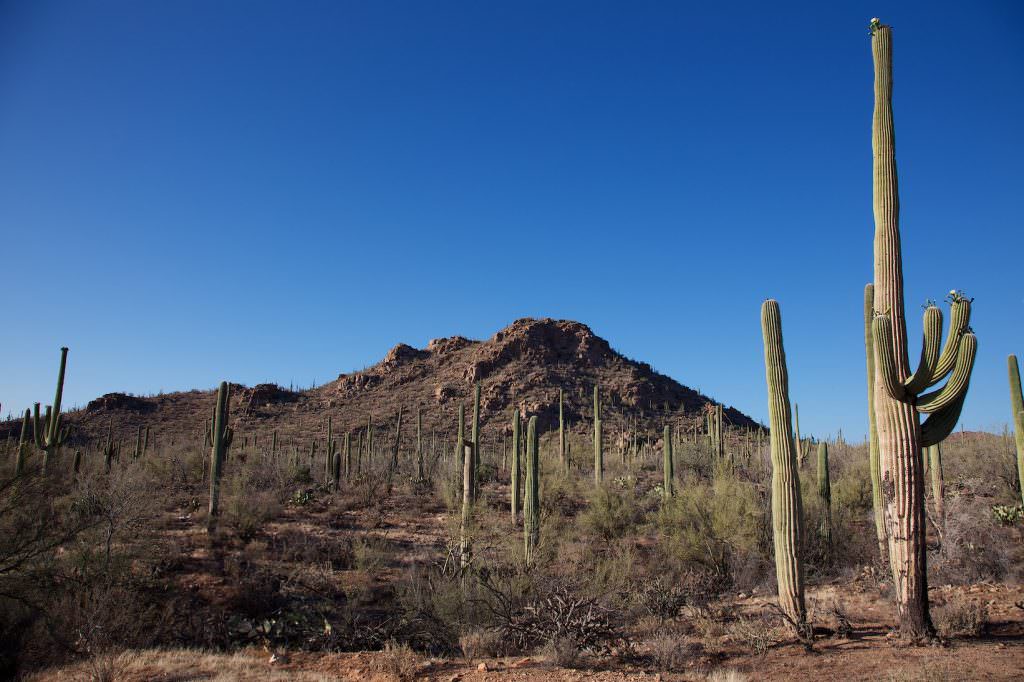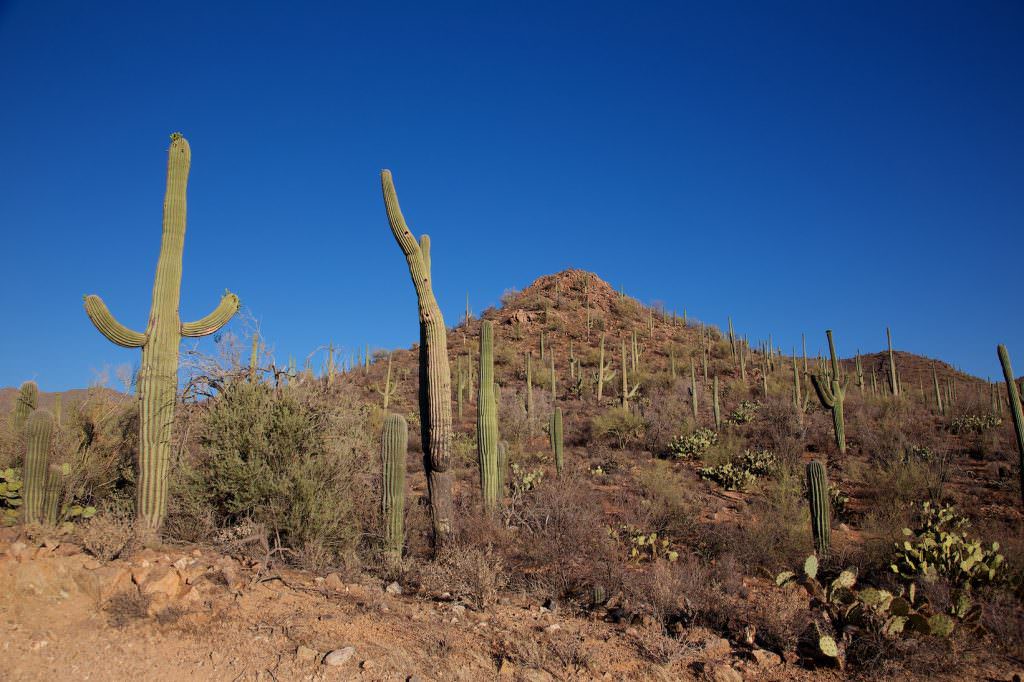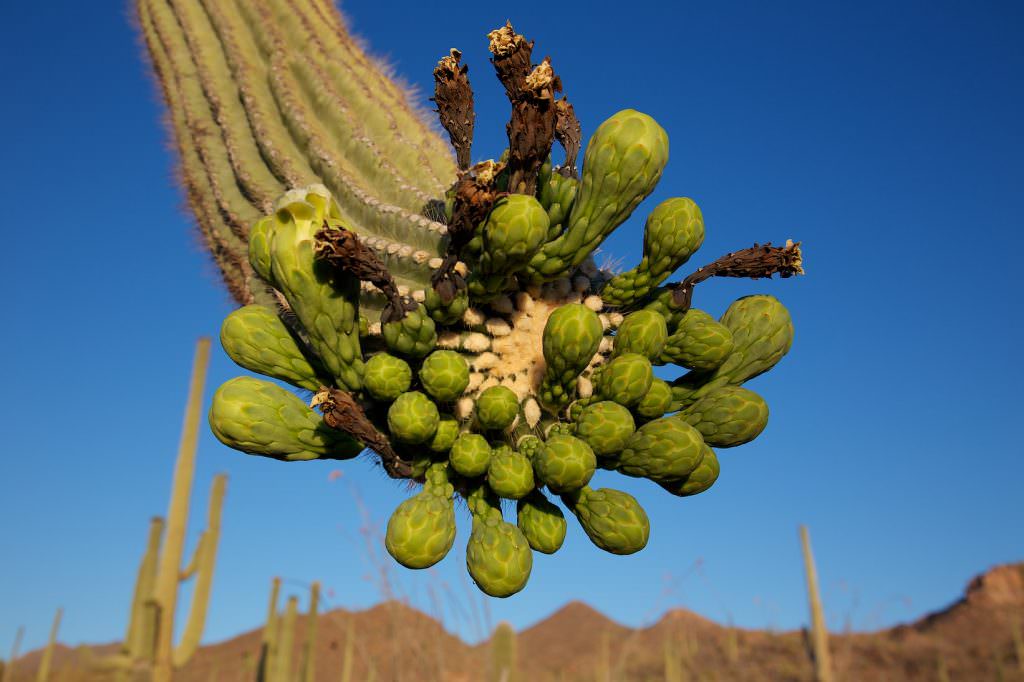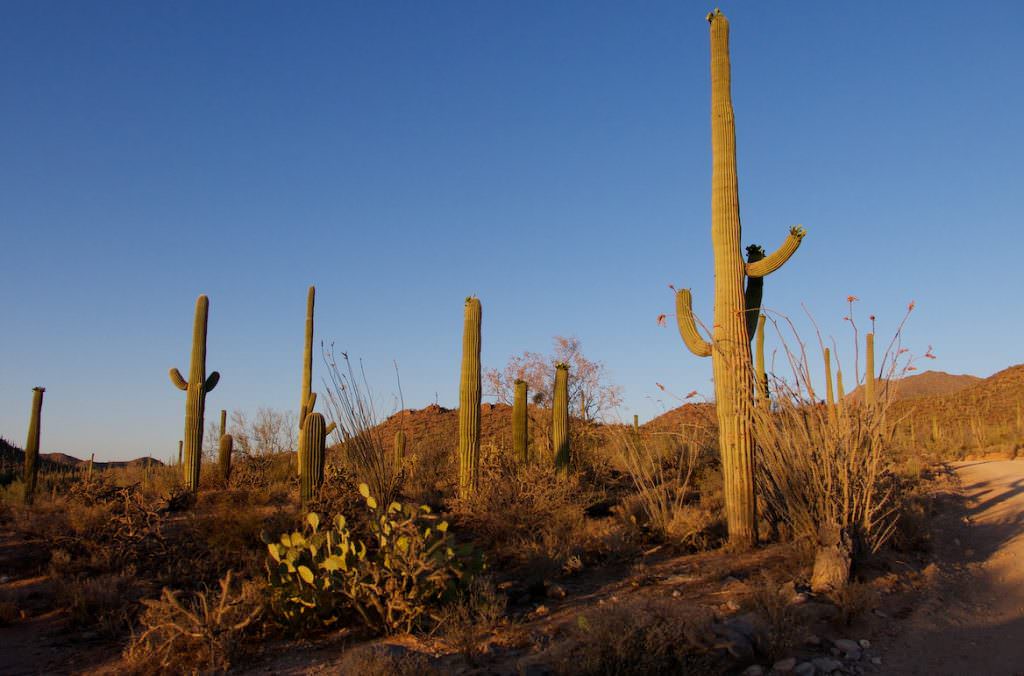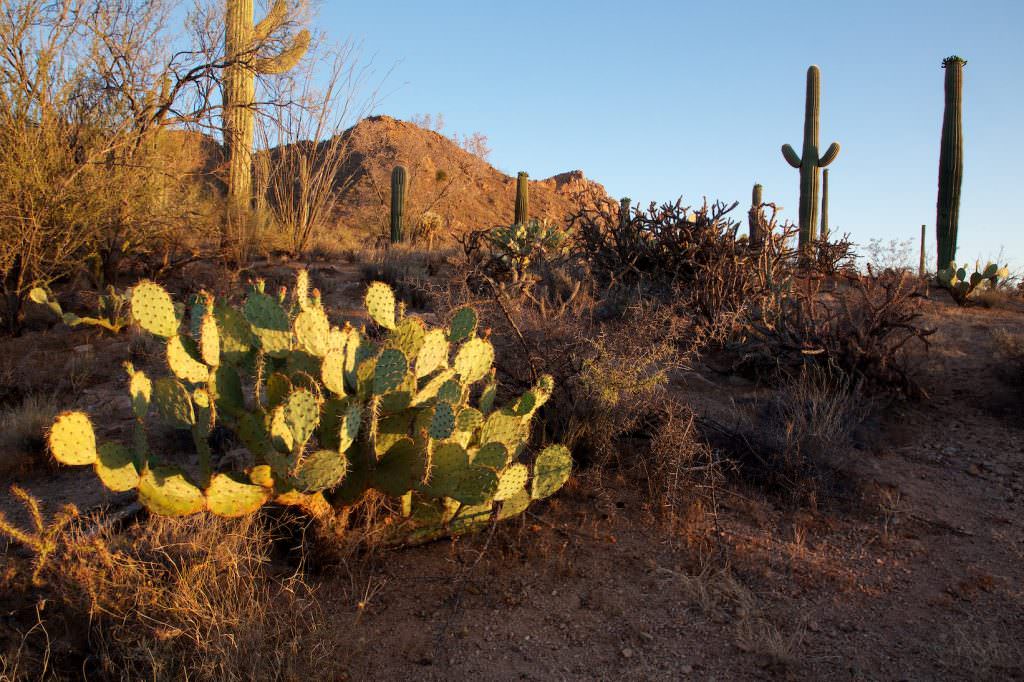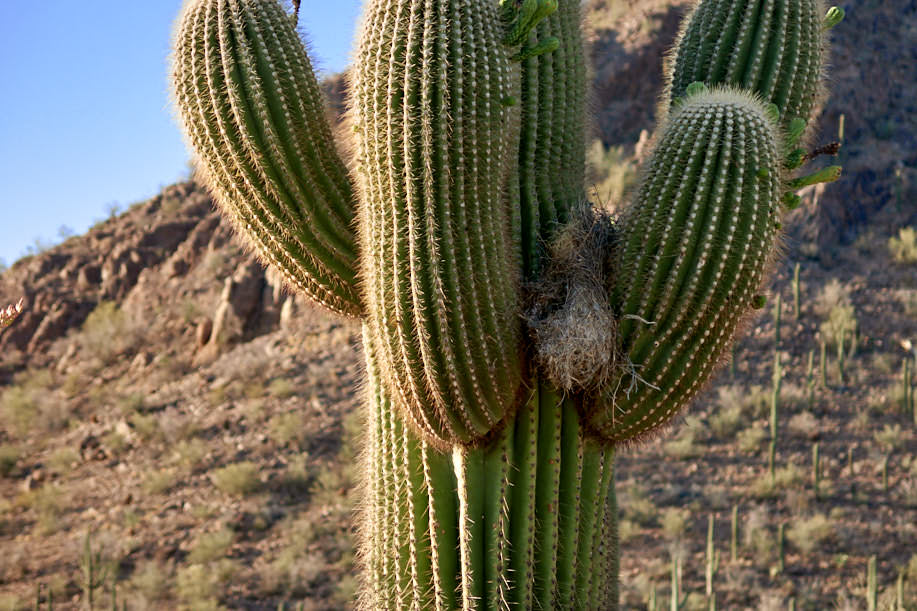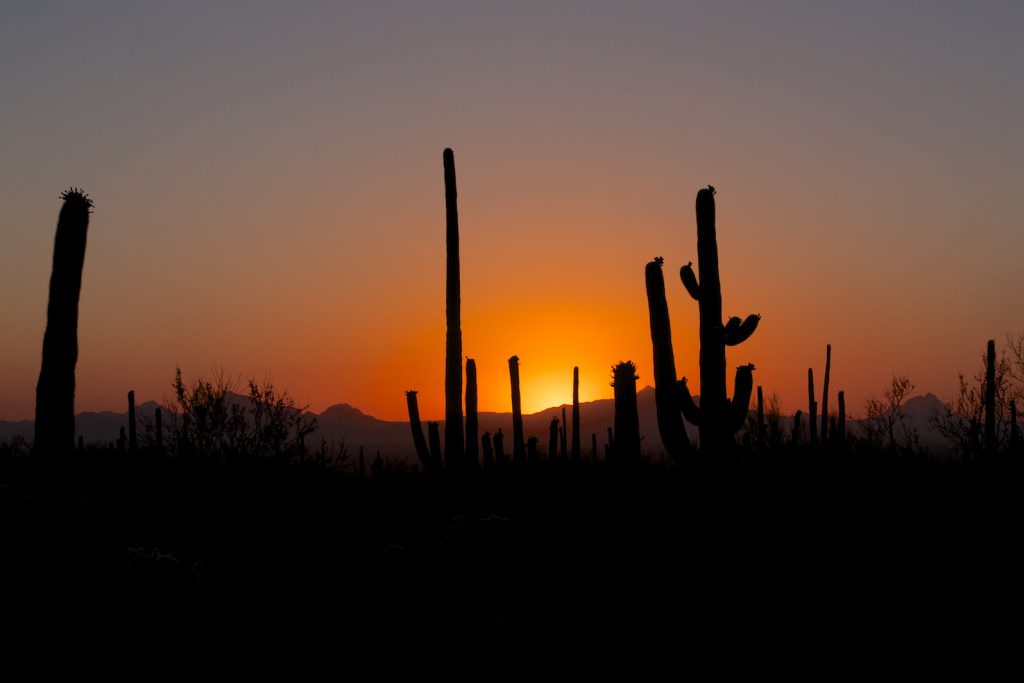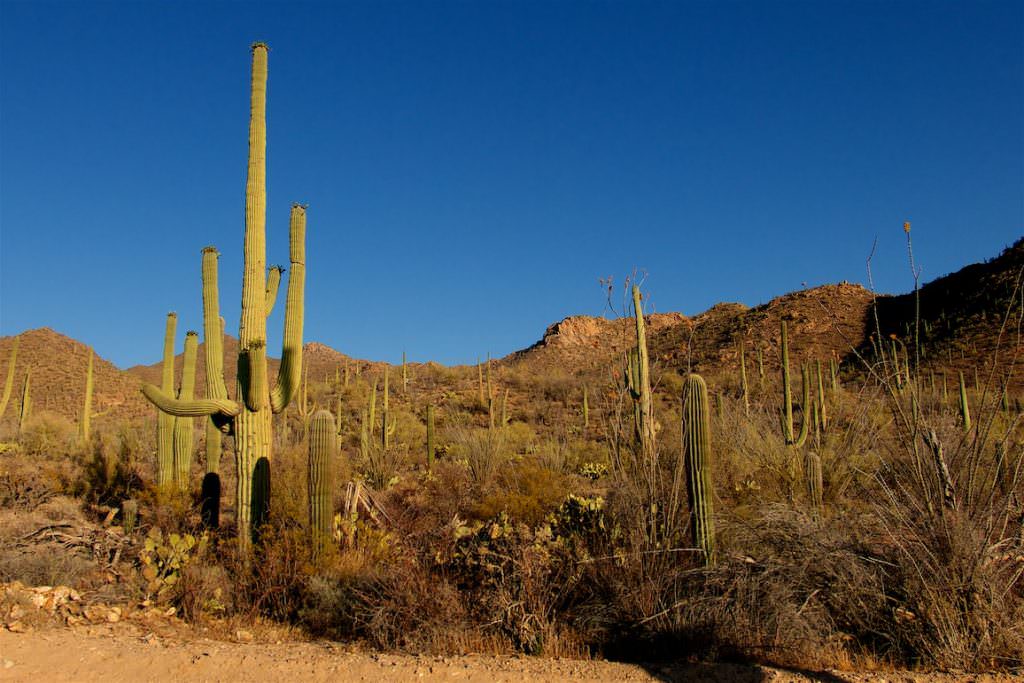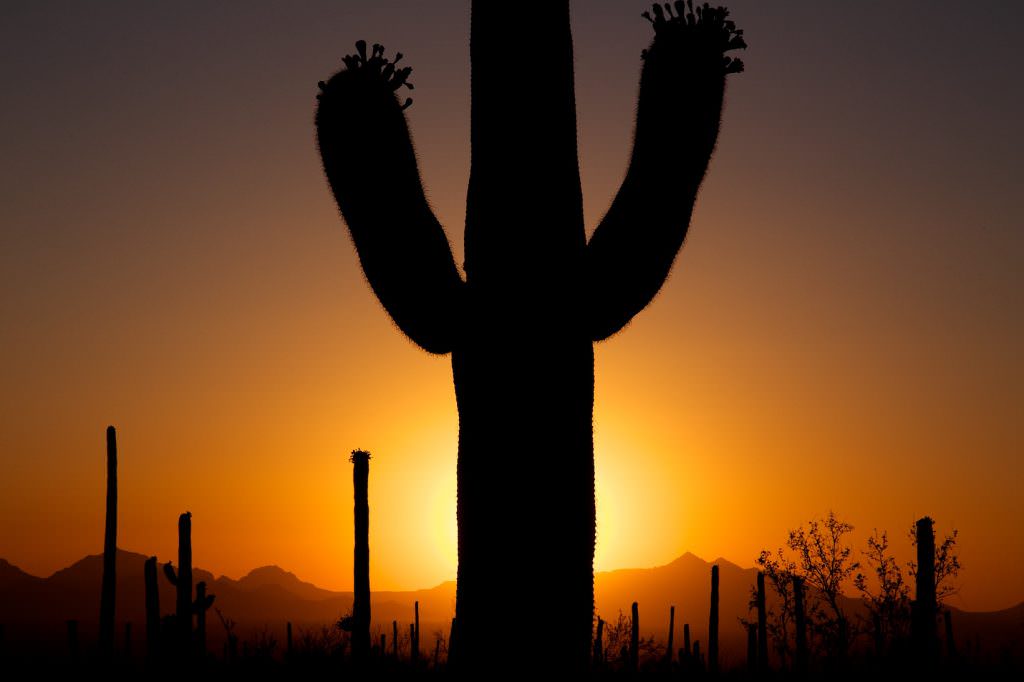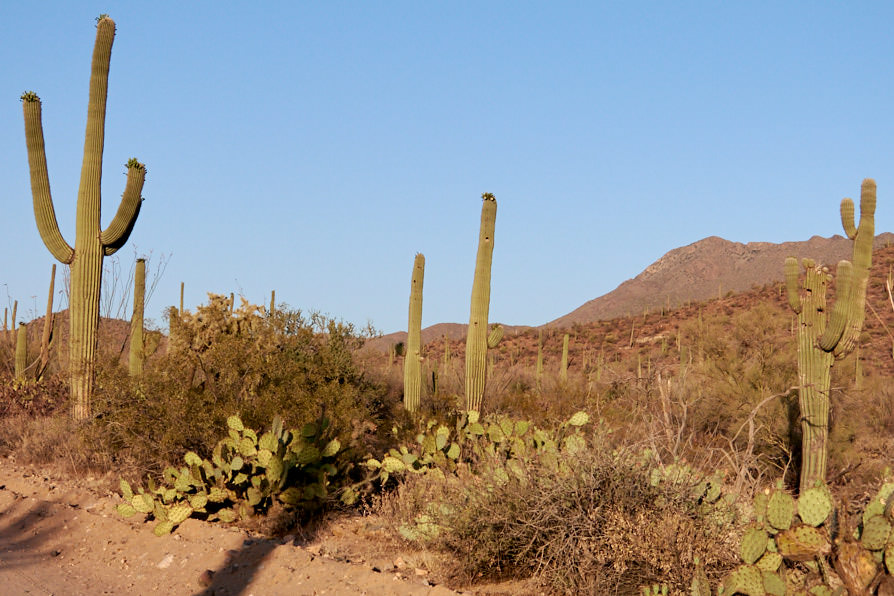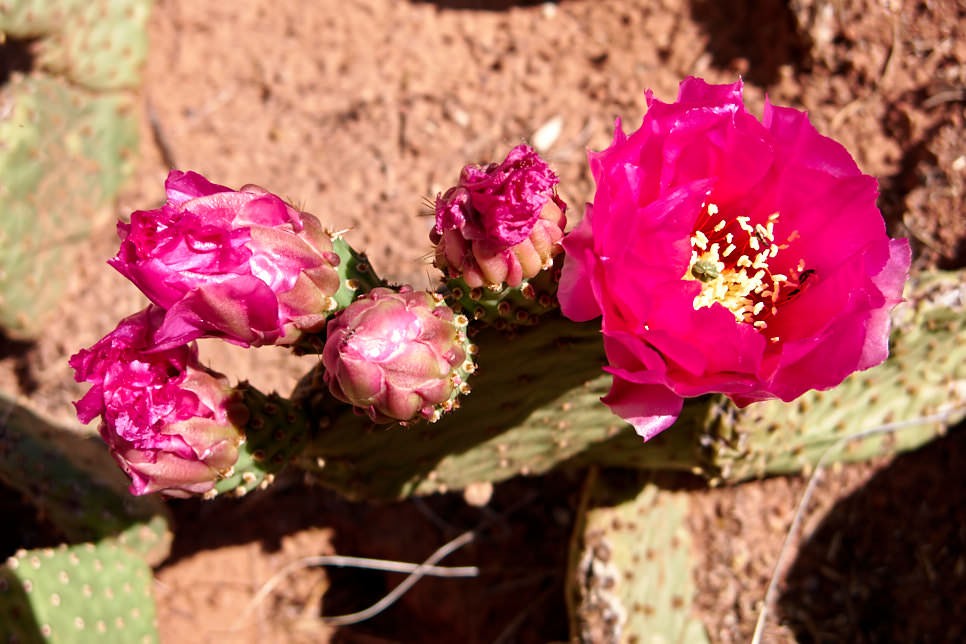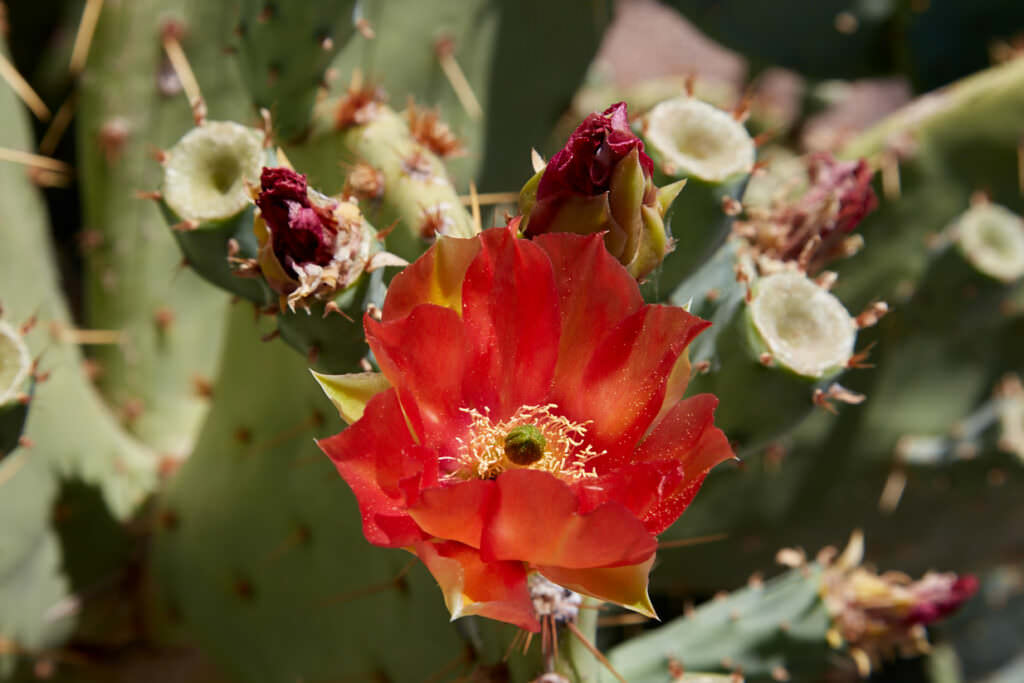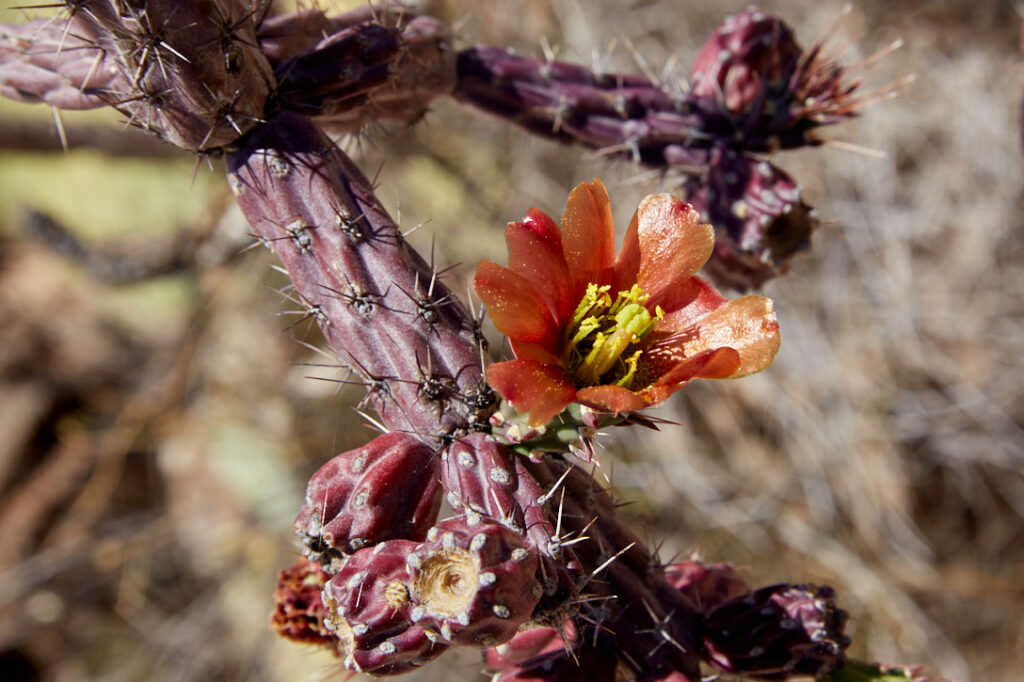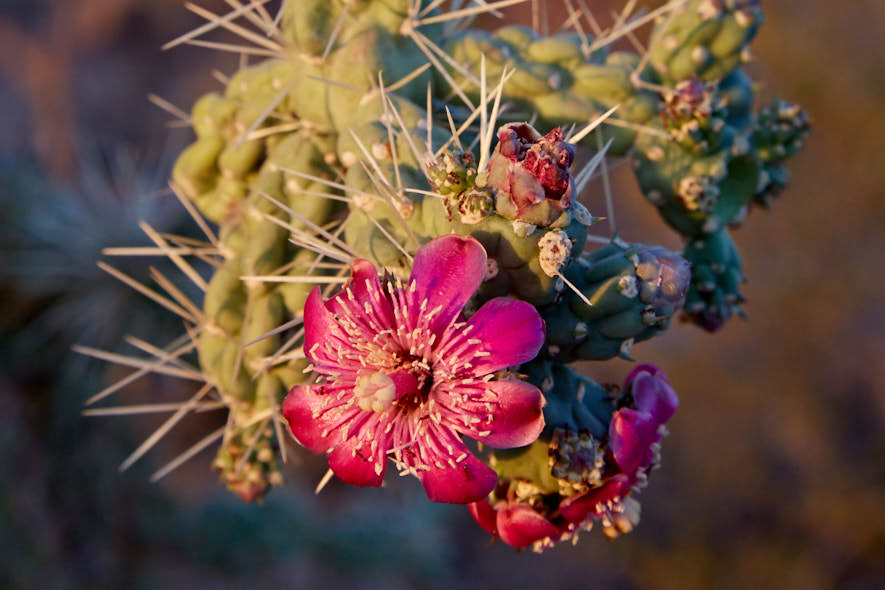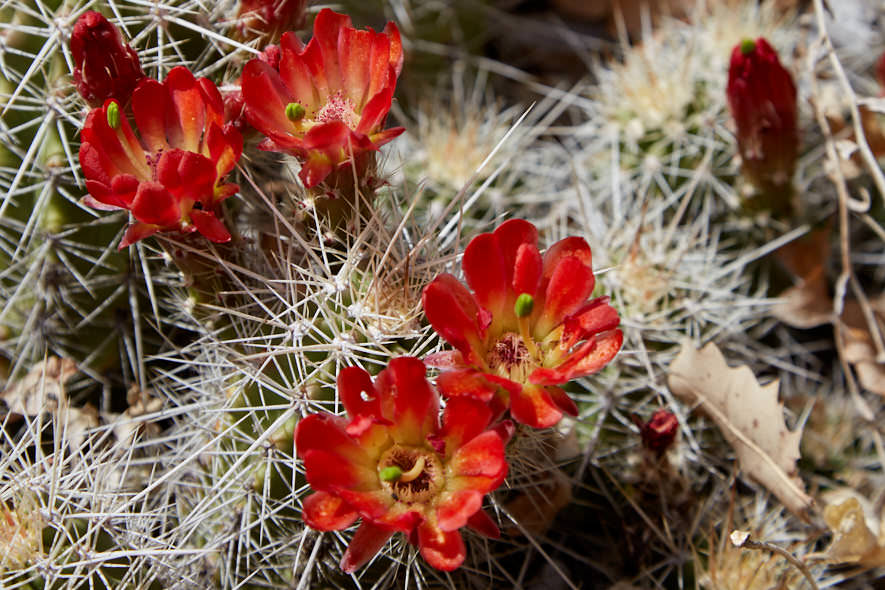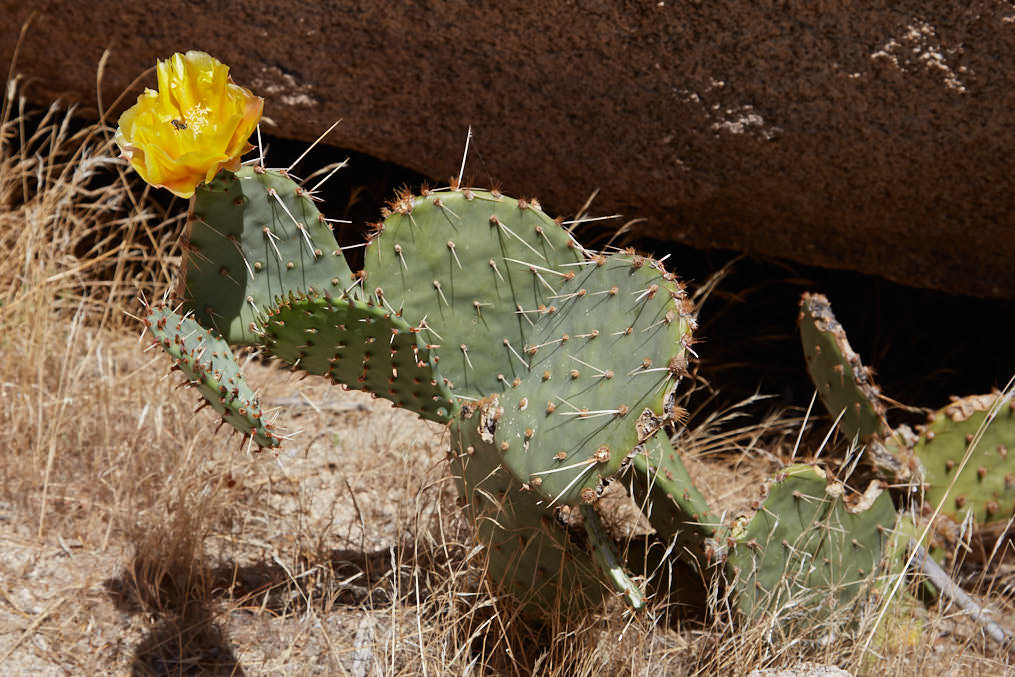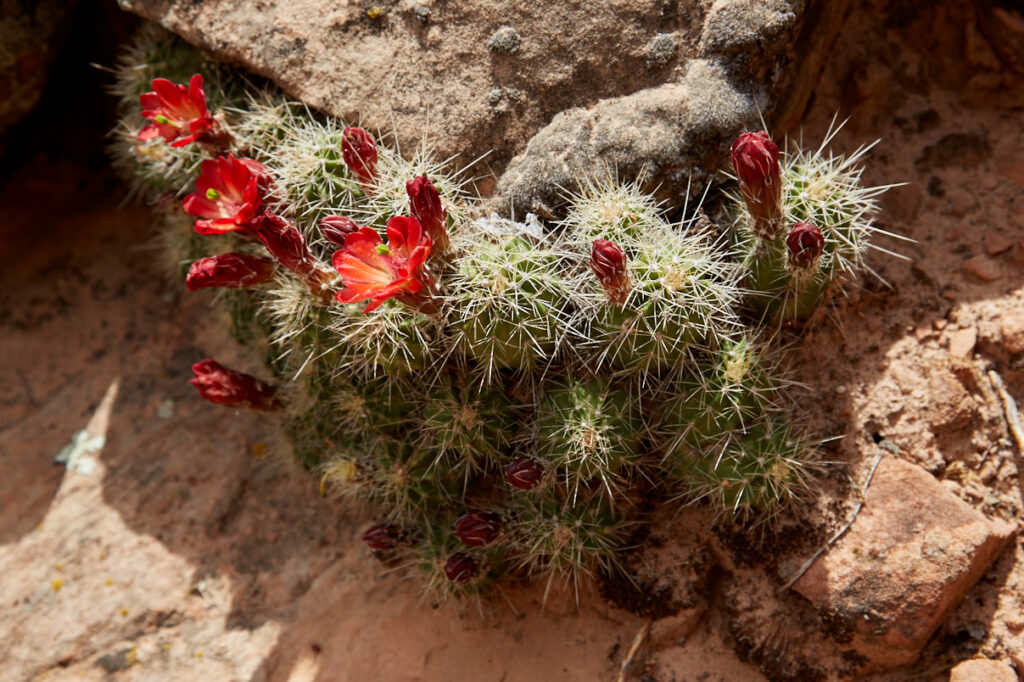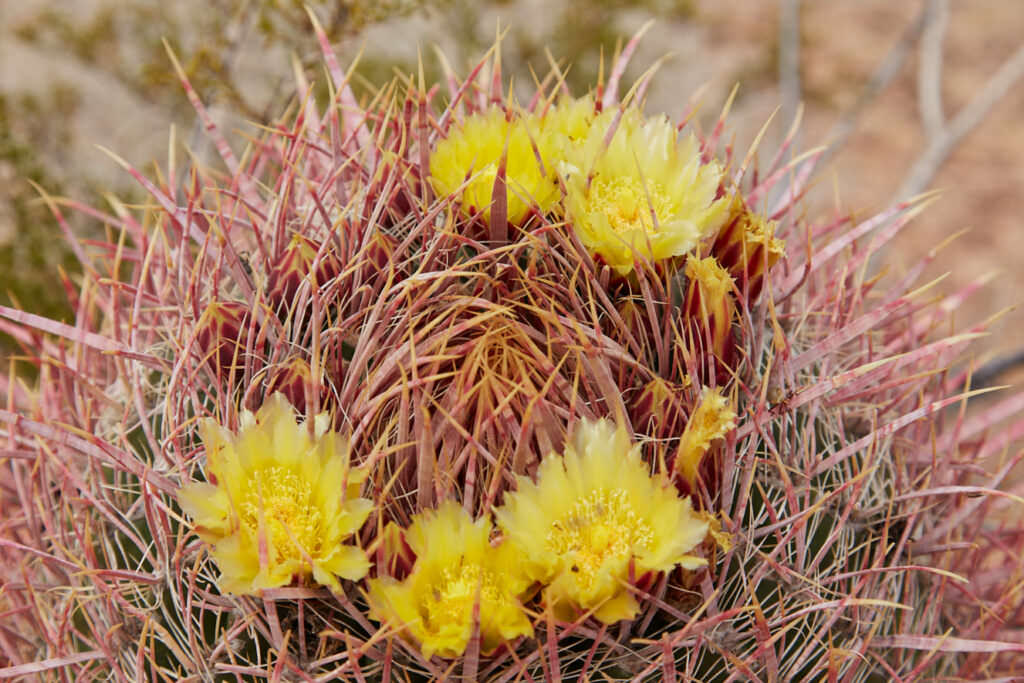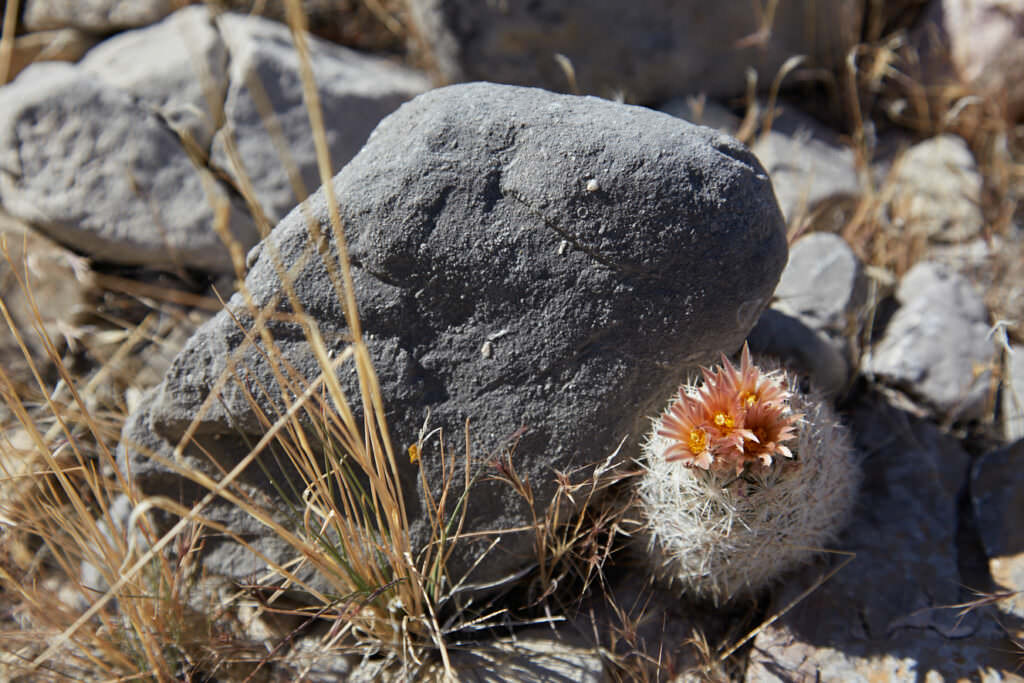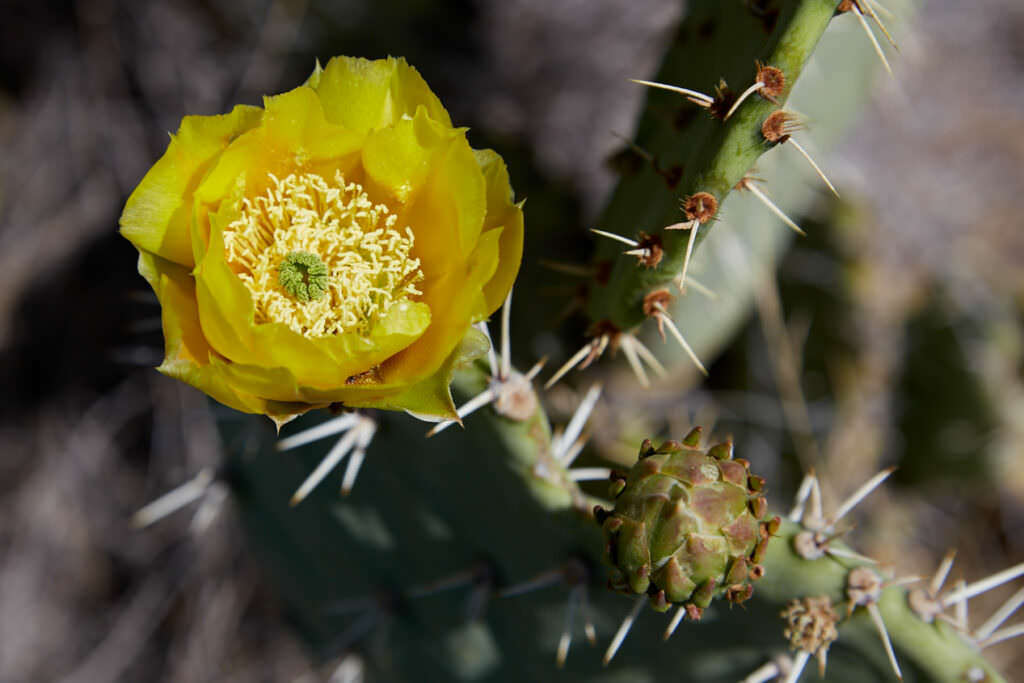General information about the National Park
Saguaro National Park is located in the Sonara Desert, east and west of the city of Tucson. The area is particularly rich in biodiversity and is home to more than 1000 species of plants and animals. The name-giving species is the Kanderlaber cactus (Carnegiea gigantea) - the saguaro. Here in the Tucson area, the giant cactus is particularly common, and so two areas were declared a national park in 1994 to protect this extraordinary plant.
Saguaros are large, columnar stem succulents with very extensive root systems. The main shoot grows up to 66ft high and up to 27.6in thick. Branching does not form until the plant is very old, starting at about 50 years. The plants can live up to 200 years. The flowering period is from May to June. The flowers open about 2 hours before sunset and remain open until the next noon.
Number of visitors
In 2022 Saguaro NP ranked 28th in the visitor statistics of the most visited national parks.
Best time to visit: The most pleasant temperatures are found between October and April.
Our visits:
So far 2 visits: April 1997, May 2013
Entrance fees and opening hours
- 25$/car and all passengers valid for 7 days
- Covered by the Anual Pass*
- Open from sunrise to sunset. The eastern entrance is open from 7 am.
*The Anual Pass is so to speak the "flat rate" for all Parks managed by the National Park Service. The pass costs a one-time fee of $80 and can be purchased at the entrance to each National Park, National Monument, etc. The pass is valid for 13 months.
Saguaro NP - East
Description: In the larger eastern part, the saguaros are not as close together as in the western part, but there are whole forests of them. The Rincon Mountain Dirstct of the park is located in a valley in front of the Mica Mountains, which are up to 2641m high. There is a paved loop from which some unpaved dirt roads depart. So you can drive right through the saguaro forests and discover everything up close.
Our rating: Even if it is very difficult to make a real comparison, we liked this part of the park almost better. The park road leads at one point up a hill and so it was possible to look at the saguaro flowers from above and take photos of them. Since the saguaros are normally very large, this is otherwise very difficult to do.
Saguaro NP West
Description: The smaller western part of the park is located in a hilly plain of the Tucson Mountains. Here there are not as many of the large cacti as in the eastern part, but they are very close together. Probably also for this reason the Tucson Mountain District is more frequented by tourists than the larger eastern part. There are viewpoints, a few trails and dirt roads along which you can admire countless specimens of the giant saguaros.
Our rating: The western part of the park is also very worth seeing. Especially at sunset we liked it here very much. The short Desert Discovery Nature Trail is also worth seeing. Here you can find all kinds of cacti that are labeled with boards and thus provide the visitor with lots of information about the prickly fellows. We drove a loop of Hohokam and Golden Gate Road. The roads were both unpaved and very well passable with any car.
Cactus flower
Description: Cacti are everywhere in the desert, but here in Saguaro NP so many of them are cultivated, nurtured and cared for that you can find a variety of the spiny fellows in a relatively small space. Especially in spring, between the end of March and the beginning of May, many of the species start to bloom and provide the desert with many pretty colorful spots.
Our rating: The cactus blossom is definitely an argument to take a road trip through the southwest in spring. Sure, you always find a blooming cactus when you're on the road, but in the spring a variety of plants blooms and so it's great to discover the many colorful and pretty flowers.

